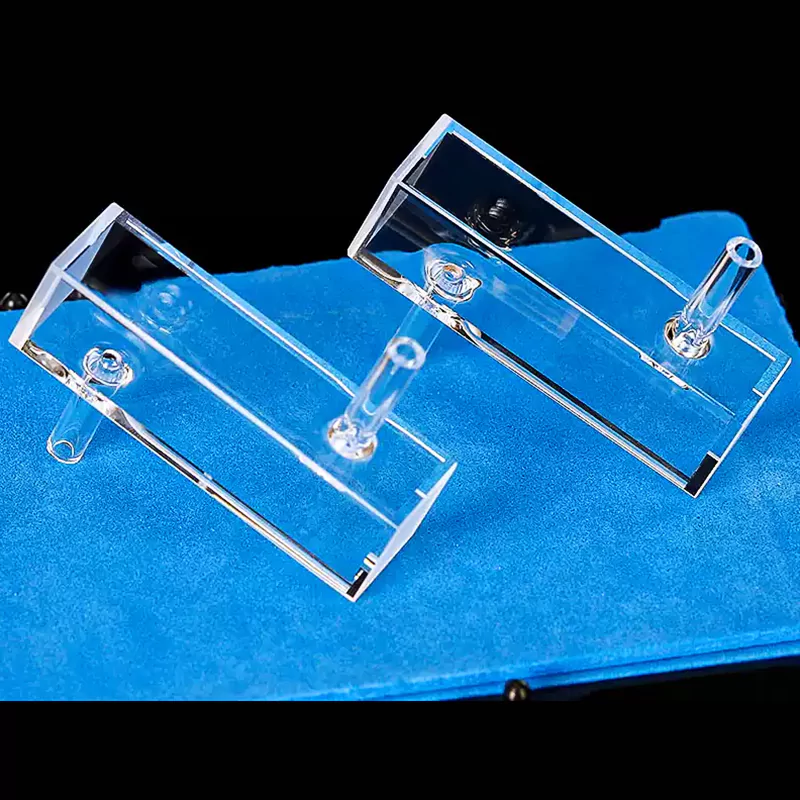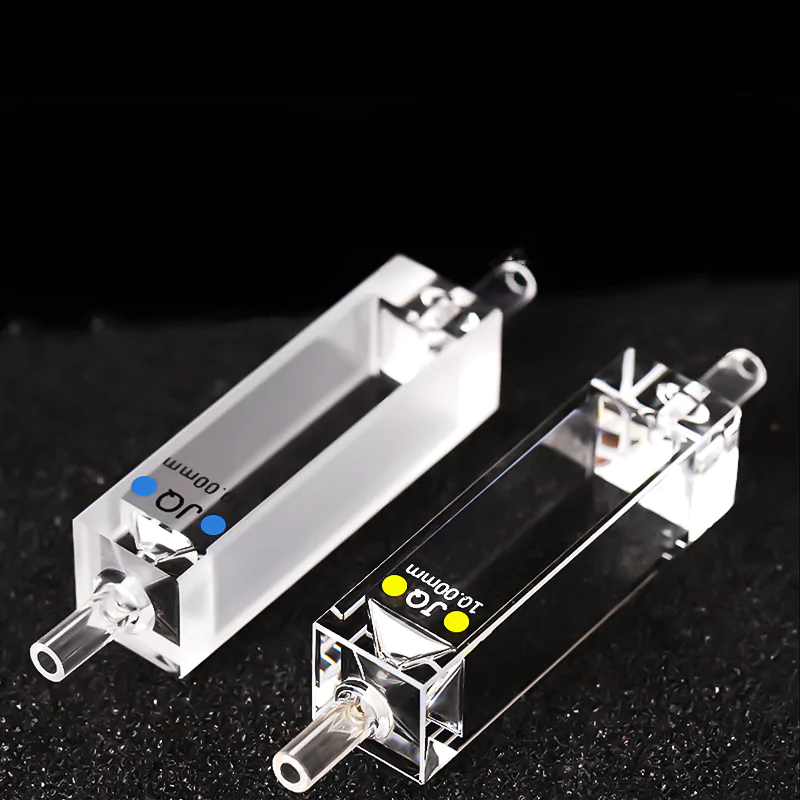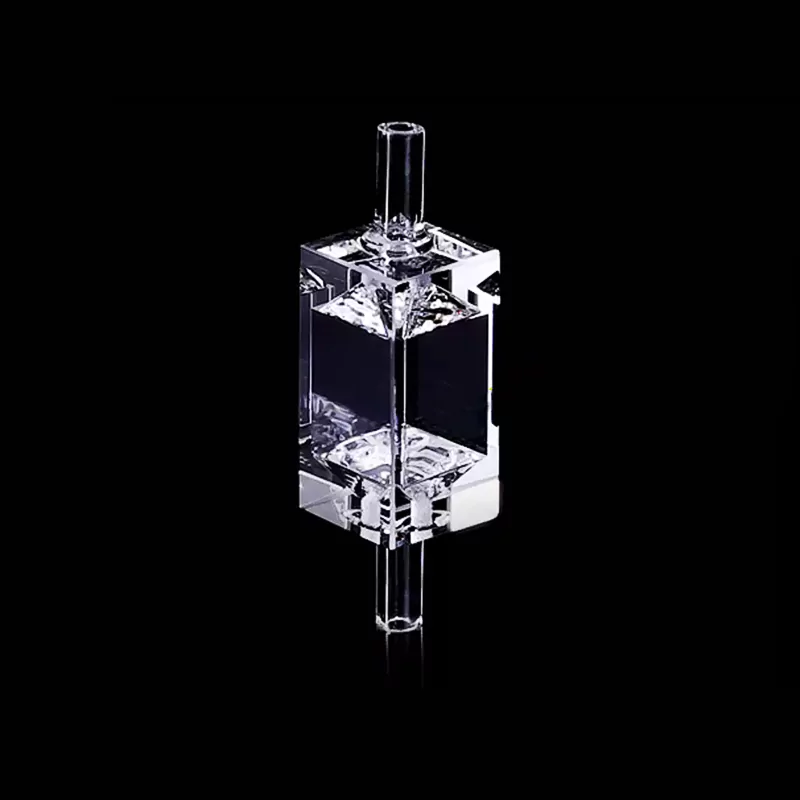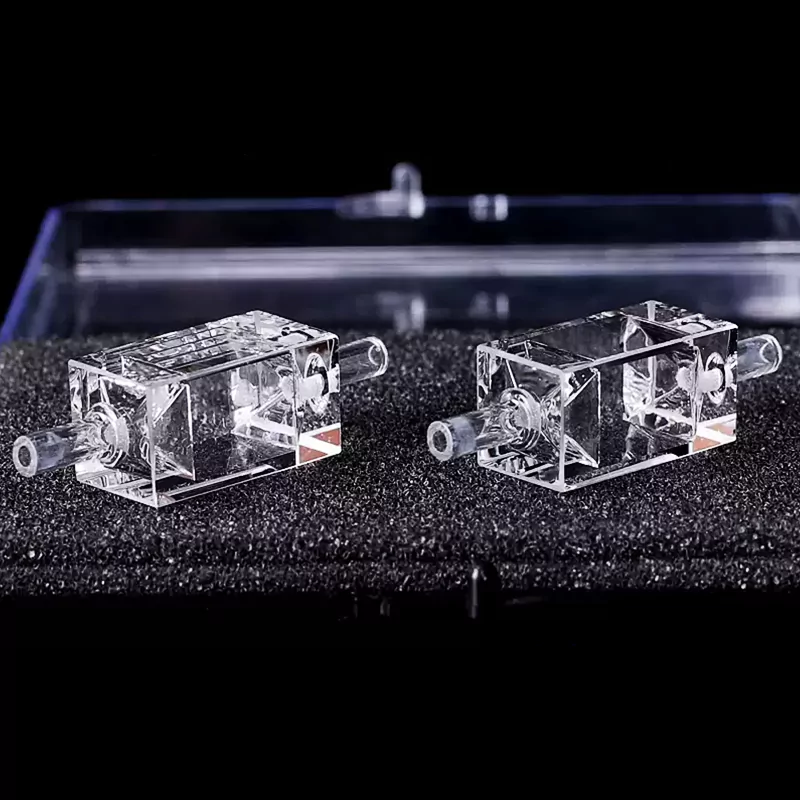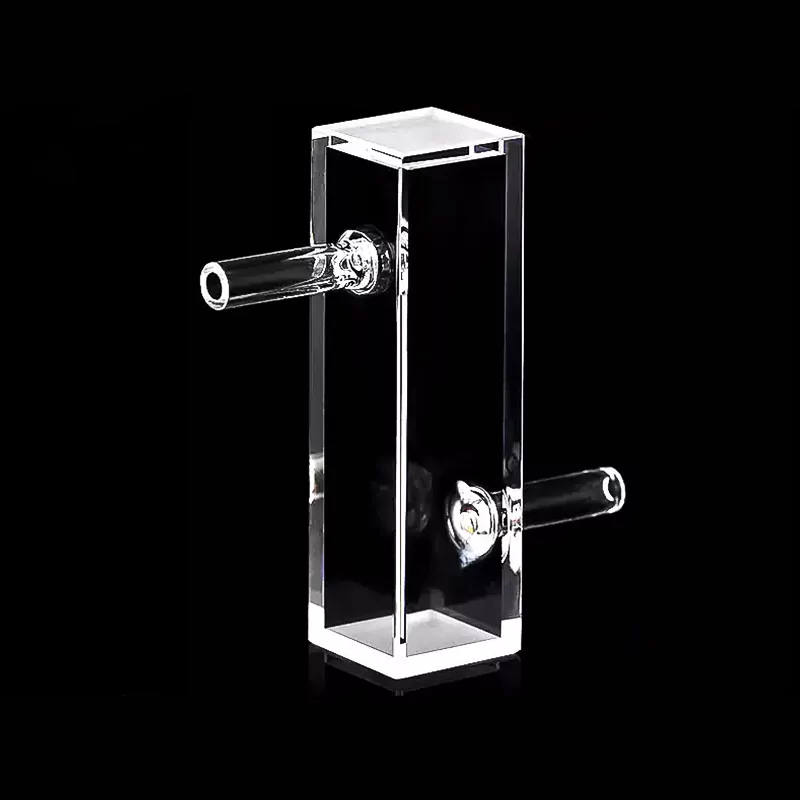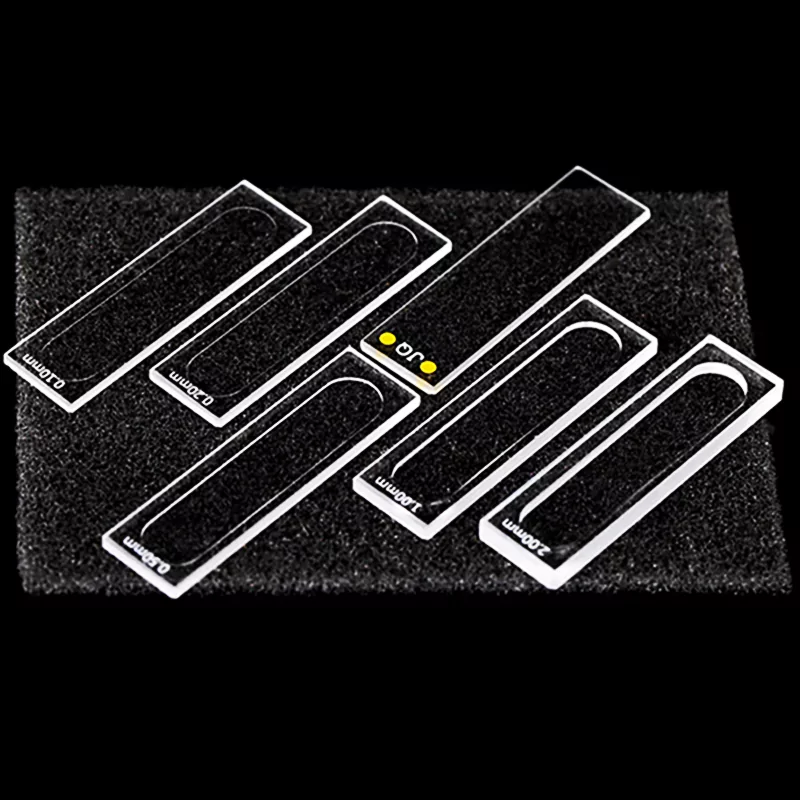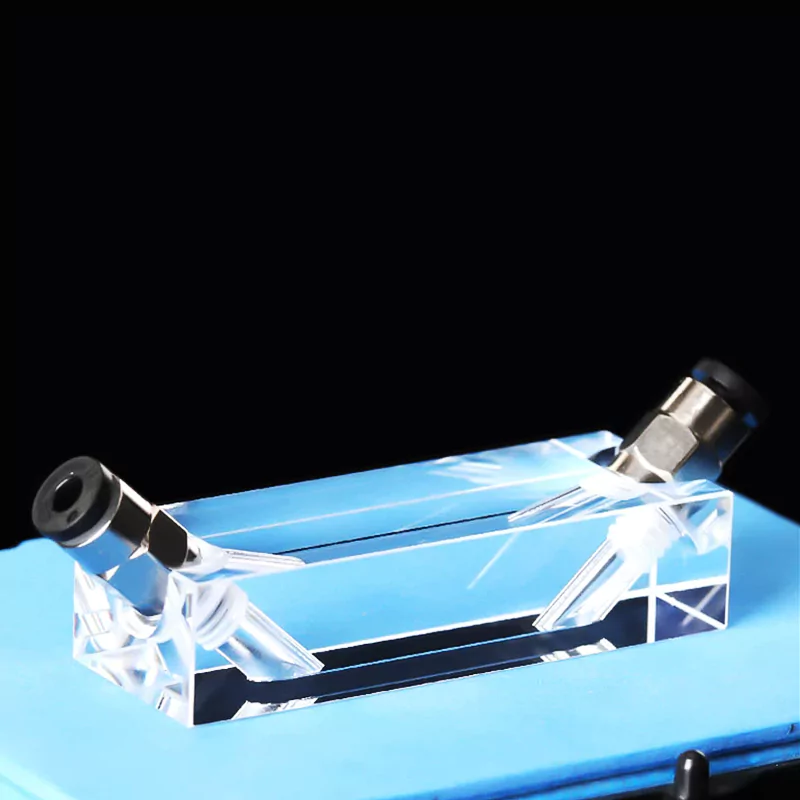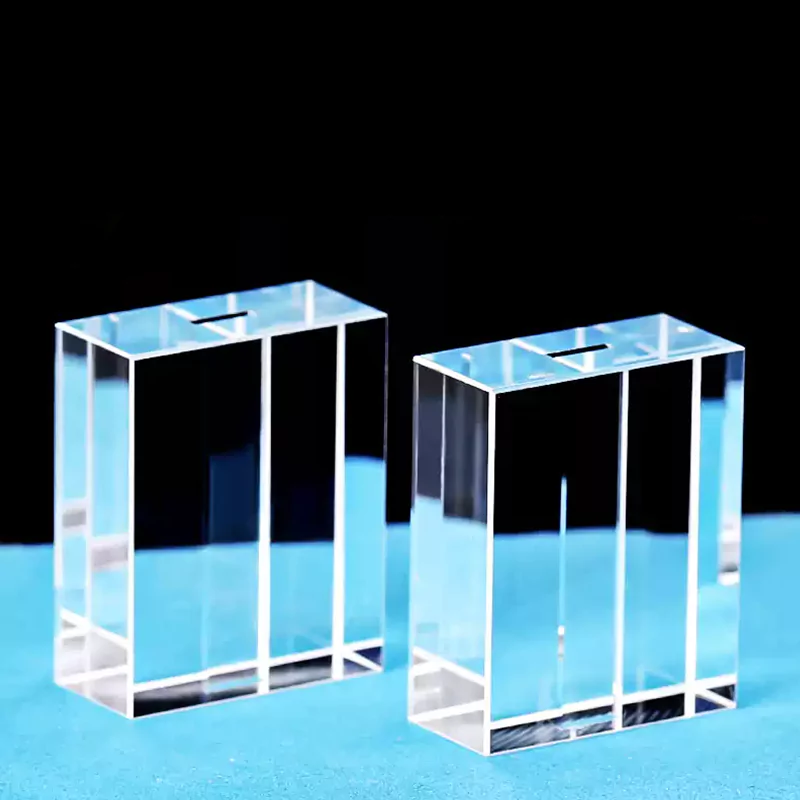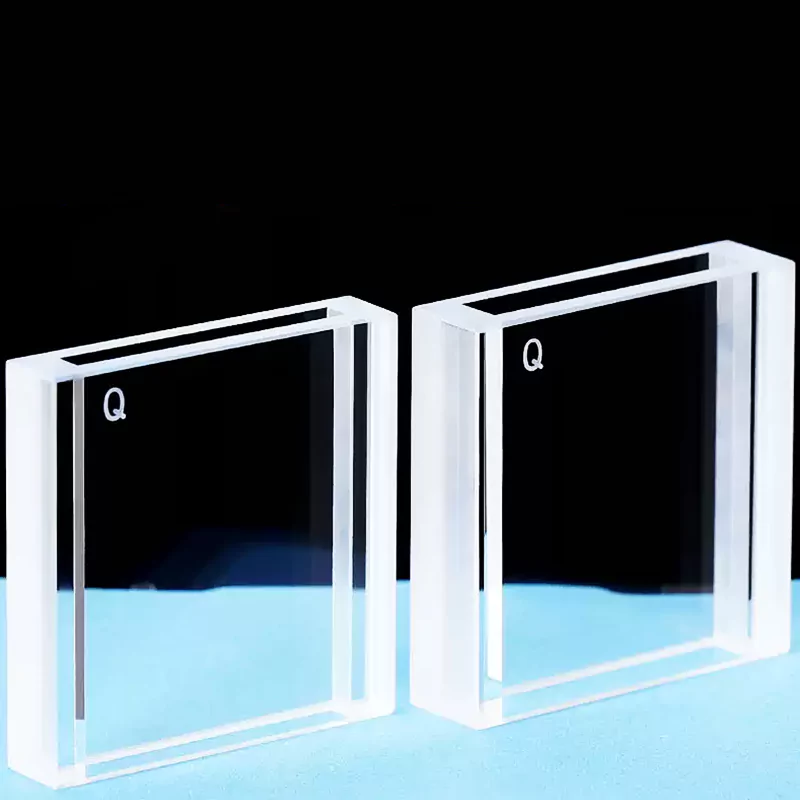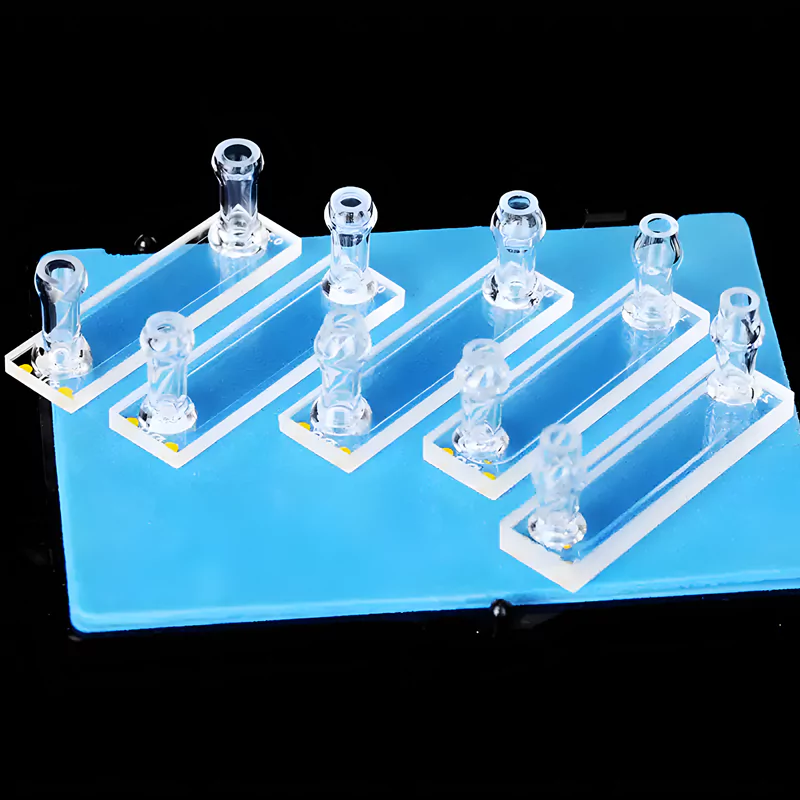- Home
- /
- Types
- /
- Quartz Cuvette
- /
- Quartz Flow-Through Cuvette
- /
- Low-Background Signal-Stable Quartz Fluorescence...
Low-Background Signal-Stable Quartz Fluorescence Flow‑Through Cell with Glass Tube Connectors for Optical Detection Systems -TOQUARTZ®
Features of Quartz Fluorescence Flow‑Through Cell with
Glass Tube Connectors
The TOQUARTZ® Quartz Fluorescence Flow-Through Cell combines precision optical design with durability for consistent performance in demanding analytical applications. Each cell is manufactured to exact specifications, ensuring reliable results in fluorescence and absorbance measurements.
Precision Optical Transmission
- UV-grade quartz ensures high spectral transparency stability
- 10 mm path length supports accurate absorbance measurements
- No autofluorescence background under excitation <250 nm
Bubble-Free Flow Design
- Internal tapered chamber eliminates residual microbubbles
- V-groove base design stabilizes turbulent inlet flow
- Uniform optical path enhances low-level signal repeatability
High-Integrity Tube Integration
- Seamless fused glass tube prevents chemical microleaks
- High-pressure tolerance up to 100 psi with zero distortion
- Compatible with standard fluoropolymer/PTFE tubing ends
Application-Ready Customization Support
- Multiple detection window options (2/3/4-sided) available
- Custom volumes from 0.3–3.5 mL engineered on request
- Geometry adapted to vertical/horizontal instrument alignment
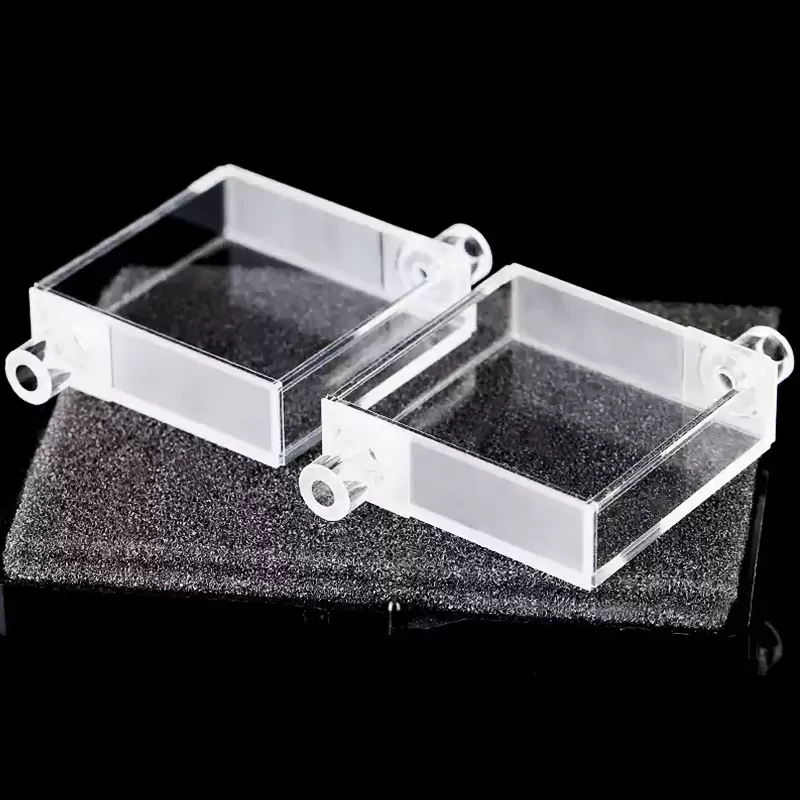
- SiO2 Purity ≥99.98%, up to 99.995%
- Chemical Resistance to Harsh Reagents
- Customization Services Available
Technical Specifications & Dimensions of Quartz Fluorescence Flow‑Through Cell with Glass Tube Connectors
Technical Specifications
| Parameter | Specification |
| 1. Physical Properties | |
| Pressure Resistance | Up to 7 bar (continuous); burst tested to 10 bar |
| Thermal Stability | Operable from −40°C to +1100°C |
| Glass Tube Joint Strength | >25MPa fused interface tensile resistance |
| Flow Compatibility | Supports 0.1–2.0mL/min standard analytical flow |
| Connector Integration | Fused glass tubes with zero-dead-volume interface |
| 2. Chemical Properties | |
| Material Purity | ≥99.98% SiO2 fused quartz |
| Acid/Base Resistance | Stable from pH 1 to pH 14 |
| Organic Solvent Compatibility | Compatible with >90% analytical solvents |
| Leachable Metal Content | <1ppb for transition metal ions |
| Etching Resistance | >6 months in 1M HCl/HNO3 without transmittance loss |
| 3. Optical Properties | |
| Wavelength Range | 190nm to 2500nm (UV–VIS–NIR) |
| Background Fluorescence | <0.002 AU @ 220nm excitation |
| Transmission @220nm | >80% |
| Refractive Index @589.3nm | 1.458 |
| Optical Window Quality | 60–40 scratch–dig; UV-grade optical polish |
Size Chart
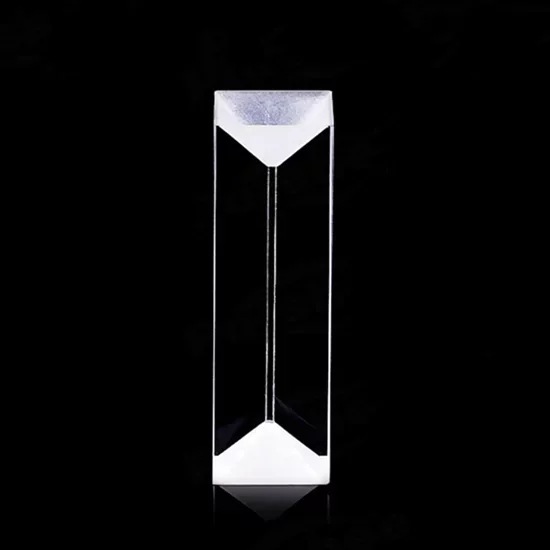
| Model | Description | Path Length | Volume | Outline Dimension |
| AT-BSM-8012 | 14μl Quartz Fluorescence Flow Cuvette for Ultralow Volume Applications | 0.6mm | 14μl | 12.5×12.5x25mm |
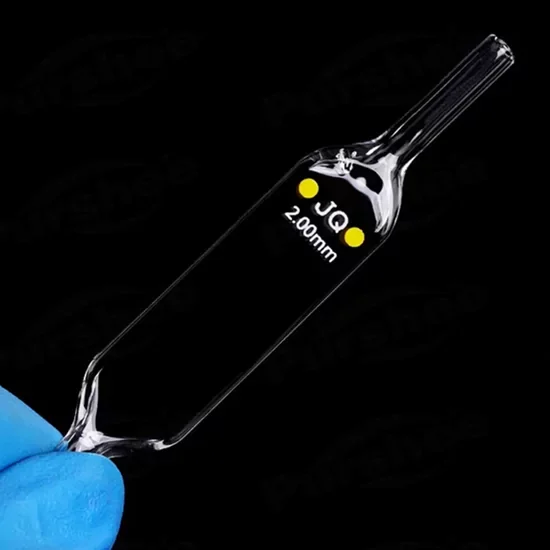
| Model | Description | Path Length | Volume | Outline Dimension |
| AT-BSM-8023 | 700μl Quartz Fluorescence Flow Cell with Four-Sided Optical Transmission | 2mm | 700μl | 12.5×4.5x45mm |
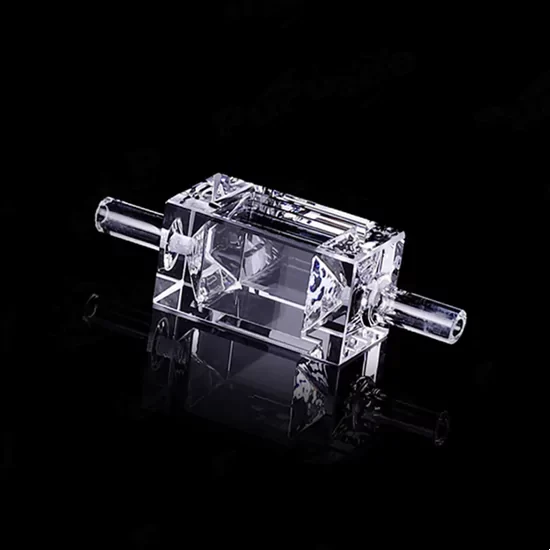
| Model | Description | Path Length | Volume | Outline Dimension |
| AT-BSM-8014 | 1.5ml Quartz Fluorescence Flow Cuvette with Circular Chamber | 10mm | 1.5ml | 12.5×12.5x25mm |
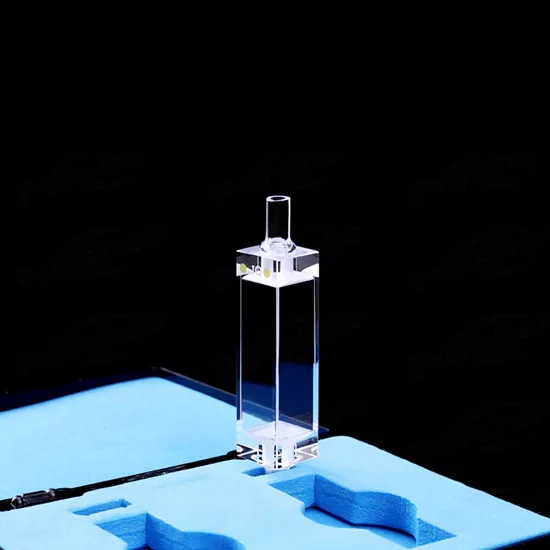
| Model | Description | Path Length | Volume | Outline Dimension |
| AT-BSM-8001 | 3.5ml Quartz Fluorescence Flow Cell with Glass Tube, Dual-Sided Transmission (Small Tube) | 10mm | 3.5ml | 12.5×12.5x45mm |

| Model | Description | Path Length | Volume | Outline Dimension |
| AT-BSM-8001-1 | 3.5ml Quartz Fluorescence Flow Cell with Glass Tube, Dual-Sided Transmission (Large Tube) | 10mm | 3.5ml | 12.5×12.5x45mm |
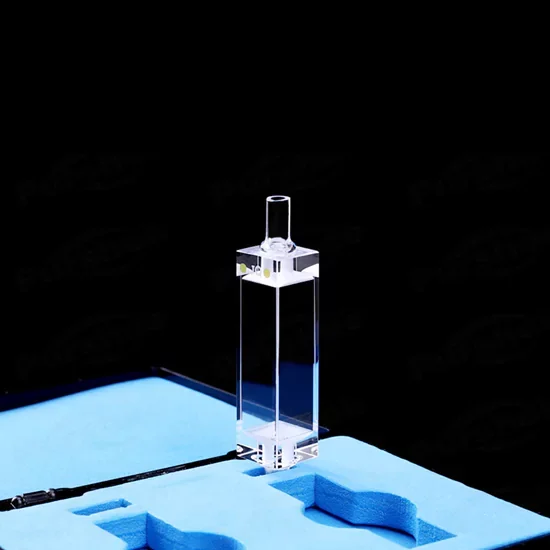
| Model | Description | Path Length | Volume | Outline Dimension |
| AT-BSM-8001-2 | 3.5ml Quartz Fluorescence Flow Cell with Glass Tube, Four-Sided Optical Access (Small Tube) | 10mm | 3.5ml | 12.5×12.5x45mm |
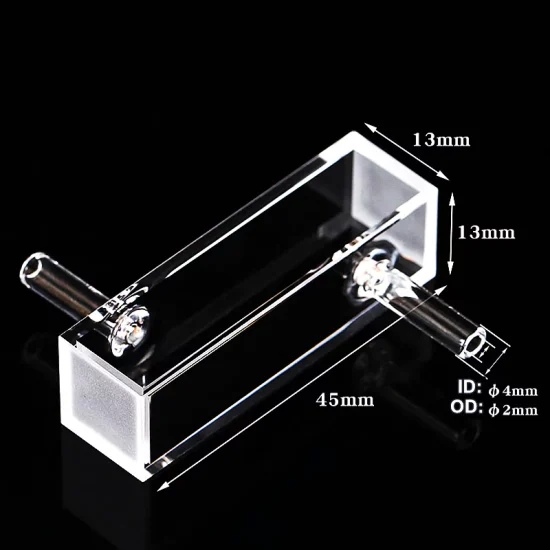
| Model | Description | Path Length | Volume | Outline Dimension |
| AT-BSM-8031-2 | 4ml Quartz Fluorescence Flow Cuvette with Elongated Body Design | 10mm | 4ml | 13x13x45mm |
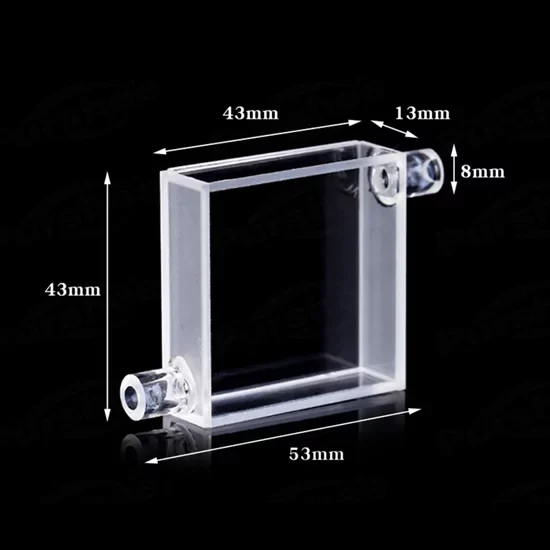
| Model | Description | Path Length | Volume | Outline Dimension |
| AT-BSM-8031 | 16ml Quartz Fluorescence Flow Cell Cuvette for Large Volume Analysis | 10mm | 16ml | 43x43x13mm |
TOQUARTZ® Solving Challenges in Spectroscopic Analysis with Quartz Fluorescence Flow‑Through Cell with Glass Tube Connectors
Quartz Fluorescence Flow-Through Cell in HPLC Detection Systems
Key Advantages
-
Bubble-Suppressing Geometry
Internal chamber minimizes turbulence and ensures bubble-free flow stability at 0.2–1.5 mL/min. -
Low-Noise Fluorescence Clarity
Ultra-pure quartz yields background levels <0.002 AU at 220 nm excitation. -
Integrated Leak-Proof Glass Connectors
Fused junctions withstand 100 psi+ without signal disruption or microleakage.
TOQUARTZ® solution
A pharmaceutical CRO in Germany experienced peak tailing and signal noise when detecting a 25 ng/mL impurity in cefotaxime using standard PTFE-capped flow cells. After switching to TOQUARTZ® flow-through cells with integrated glass connectors, background interference was reduced by 72%, and signal-to-noise ratio increased by 38%, enabling quantification below 10 ng/mL with consistent reproducibility over 300+ injections.
Quartz Fluorescence Flow-Through Cell for Environmental Analysis
Key Advantages
-
Superior Chemical Inertness
Fused quartz resists pH 1–14 and >90% organic solvents, enabling long-term use. -
Optical Transmission Stability
10 mm path quartz retains >80% UV transmittance after 6-month acid exposure. -
Extended Lifecycle in Harsh Conditions
Leak-proof tube connectors survive 500+ hours in 1 M HNO₃ and NaOH alternations.
TOQUARTZ® solution
A coastal water quality lab in South Korea reported optical window etching and fluorescence instability every 4–6 weeks due to acid sulfide samples. With TOQUARTZ® flow-through cells, they operated for over 9 months without degradation, reducing maintenance costs by 87% and improving baseline stability in trace PAH analysis.
Quartz Fluorescence Flow-Through Cell in Research Applications
Key Advantages
-
Customizable Multi-Angle Geometry
Supports 90°, 45°, and frontal fluorescence within a 4-window architecture. -
Precise Volume & Path Control
Internal volumes from 30–300 µL with ±0.05 mm dimensional tolerance. -
Modular Glass Tube Interfaces
Variable connector length/diameter for unique optical setups or microfluidics.
TOQUARTZ® solution
A fluorescence lifetime spectroscopy team at a UK university required a 3-window flow cell with a vertical outlet for dual-angle detection and inline quenching. TOQUARTZ® designed a tailored 10 × 5 mm cell with lateral and top-side fused glass ports. Their system achieved <2% temporal jitter and a 15% increase in photon recovery at 430 nm — outperforming their previous commercial setup.
Customization Services for Your Specific Applications
Dimensional Customization
- Custom optical path lengths
- Specialized internal volumes
- Modified wall thicknesses for pressure requirements
- Custom overall dimensions for instrument integration
Flow Design Modifications
- Alternative connector orientations
- Multi-port designs for complex flow patterns
- Z-flow or L-flow path configurations
- Specialized internal flow geometries
Interface Adaptations
- Alternative connector types (NPT, flange, etc.)
- Integrated mounting features
- Instrument-specific alignment features
- Specialized optical window configurations
Product Usage Guide for Optimal Performance
Installation & Connection
- Inspect the cell for any shipping damage or contamination before installation.
- Handle the cell only by its non-optical surfaces to prevent fingerprints or scratches.
- Connect appropriate tubing to the glass tube connectors using flexible PTFE or silicone tubing.
- Ensure tubing fits securely over the glass connectors without applying excessive force.
- Use tubing clamps or fittings if needed, but avoid overtightening which may stress the connectors.
- Mount the cell securely in your instrument using appropriate holders that avoid stress on the quartz body.
Troubleshooting Common Issues
-
Leaking connections:
Check tubing fit, replace worn tubing, avoid overtightening clamps. -
Air bubbles:
Degas mobile phase, check for loose connections, increase back pressure slightly. -
Reduced signal:
Check for deposits on optical surfaces, verify alignment, inspect for scratches. -
High background:
Thoroughly clean cell, check for contamination in system, verify light source stability. -
Uneven flow:
Check for partial blockages, ensure pump is functioning properly.
Maintenance & Storage
- After each use, rinse thoroughly with appropriate solvent followed by high-purity water.
- For stubborn residues, soak in dilute laboratory detergent, followed by thorough rinsing.
- Avoid abrasive cleaning methods that may scratch optical surfaces.
- For storage, fill with filtered, high-purity water or appropriate storage solution.
- Store in a clean, dust-free container to protect optical surfaces.
- For long-term storage, ensure cell is completely dry before storage in a sealed container.
Operation Best Practices
- Prime the system to remove all air bubbles before taking measurements.
- Maintain a consistent flow rate appropriate for your application (typically 0.1-2 mL/min).
- Avoid rapid pressure changes that may stress the cell or connections.
- When measuring with UV light, ensure appropriate eye protection is used.
- For highest sensitivity, ensure the cell is properly aligned in the optical path of your instrument.
Need Engineering Support for Your Quartz Fluorescence Flow-Through Cell Application?
select or customize the right quartz fluorescence flow-through cell with glass connectors for your specific analytical requirements.
Why Partner with TOQUARTZ
Direct Factory Advantage
As a direct manufacturer, we can cut out the numerous intermediate links.
Engineering Expertise
Technical team guides clients from material selection to design optimization, translating specs into deliverables.
Flexible Manufacturing
Handling standard & custom orders via small-batch expertise and prototyping rigor to meet urgent deadlines.
Quality
Assurance
Pre-shipment 3-step validation:
1. dimensional accuracy,
2. material purity ,
3. performance thresholds
Global Supply Chain
Reliable global logistics to industrial hubs (DE/US/JP/KR priority) with trackable milestones.
Releted Products
As a specialized manufacturer with direct factory capabilities, TOQUARTZ provides both standard and custom quartz solutions with engineering support throughout the specification and implementation process.
FAQ
Q: Why is a 4-sided transparent body important in a Quartz Fluorescence Flow‑Through Cell with Glass Tube Connector?
A: The 4-sided transparent quartz design enables multi-angle excitation and emission, essential for flexible fluorescence detection geometries. It allows both traditional 90° and front-face collection setups. This increases compatibility with various spectrofluorometers and dual-mode instruments. It also improves photon collection efficiency in low-signal applications.
Q: What advantage does the Quartz Fluorescence Flow‑Through Cell with Glass Tube Connector offer over cuvettes with plastic fittings?
A: Unlike plastic caps, the fused glass tube connectors provide a chemically inert and thermally stable interface. This minimizes fluorescence background and prevents degradation in aggressive solvents or elevated temperatures. The seamless fusion ensures leak-free performance at high sensitivity detection levels. It also supports longer service life under continuous flow conditions.
Q: Can the Quartz Fluorescence Flow‑Through Cell with Glass Tube Connector handle bubble-prone samples?
A: Yes. Its internal geometry is optimized to minimize microbubble formation and turbulence. The inlet/outlet orientation and smooth bore transitions prevent dead volume. This reduces noise and baseline instability often caused by trapped air. Reliable performance is ensured even in flow rates under 1 mL/min.
Q: Is the quartz fluorescence flow-through cell with glass connectors suitable for time-resolved fluorescence (TRF) applications?
A: Yes. The low-background and high optical clarity of the Quartz Fluorescence Flow‑Through Cell with Glass Tube Connector make it suitable for TRF. Its transparent sidewalls minimize signal loss and scattering. The leak-free flow path ensures consistent sample presentation during gated acquisition. Custom low-volume variants are available to improve temporal response.
Q: What is the dead volume of the Quartz Fluorescence Flow‑Through Cell with Glass Tube Connector?
A: Standard models with a 10 mm optical path offer internal volumes between 60–100 µL. The connector design minimizes dead volume at entry and exit points. This is essential for reducing sample dilution and improving response time. Smaller-volume custom versions down to 20 µL are also available for microfluidic integration.
Contact our engineering team for technical consultation and pricing. We’ll help you select the optimal specifications for your application requirements.

